
2023
Faini, Marco
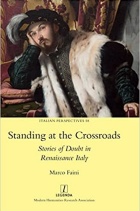
Imagined as an armed old man leaping like a locust or as a young man walking in the dark, doubt occupies a prominent place in the mental landscape of Renaissance Italians. Intriguing stories of doubters, as well as allegories and tales of doubt populated sonnets, dialogues, novelle, religious tracts, and a wealth of other vernacular texts. In an age of crisis and renewal, doubt no longer pointed to an exclusively individual condition nor was it solely the object of philosophical and theological reflections. Rather, doubt became a complex cultural object at the centre of numerous cultural strategies. Why was it so? Were Renaissance Italians especially inclined to doubt? And, if so, what were the cultural and emotional consequences of such an attitude? Resorting to a large and diverse array of literary and visual sources, Marco Faini reconstructs how doubt became a privileged tool to make sense of an increasingly complex world.
2021
Berlin, Henry S.

The turn of the fifteenth century saw an explosion of literature throughout Iberia that was not just sentimental, but about sentiment. Alone Together reveals the political, ethical, and poetic dimensions of this phenomenon, which was among the most important of the substantial changes in intellectual and literary culture taking place in the crowns of Portugal, Castile, and Aragon. With careful analyses of lyric poetry, sentimental prose, and wide-ranging treatises in multiple languages, this study foregrounds the dense web of relations among these genres and linguistic and cultural traditions.
Drawing on Stoic and early monastic thought, authors such as the Marqués de Santillana, Ausiàs March, and Alfonso de Madrigal explored the unifying potential of shared emotion in an ethical rehabilitation that cut across the personal and political, exalting friendly conversation, civic communication, and collective poetic composition. In his readings of these authors, Henry Berlin references recent work on lyric theory and the history and theory of emotion, from classical antiquity to the modern day. An exploration of the political and poetic potential of shared emotion, Alone Together shows how a heuristic focus on the notion of passion is illuminating for broader ongoing discussions about the nature of emotion, the lyric, and subjectivity.
Castillo, David

Linguatext-Juan de la Cuesta Hispanic Monographs
Recent exposés of the manipulative illusions of our media culture have made clear that, if we are to survive the disinformation age, we need to become better readers of our media ecosystem. Un-Deceptions proposes a series of Cervantine strategies in pursuit of that goal. It builds on Cervantes’s version of baroque desengaño (best translated as un-deception) as a toolkit (mesa de trucos) that redirects our gaze from the manipulative distractions of the illusion to the form of the illusion itself. The first part of the book is devoted to the question of truth today and how we might go about “building a reader” attuned to it in the disinformation age. This part includes explorations of The Stage of Wonders, The Glass Graduate and The Dialogue of the Dogs from this perspective. Part II proposes a series of “classroom dialogues” between Cervantes’s fiction, especially Don Quixote, and selected examples of self-reflective products of our own popular culture, starting with road movies and political satires and ending with “alt-history sci-fi.”
Castillo, David; William Egginton
McGill-Queen's Iberian and Latin American Cultures Series

The attack on the US Capitol on 6 January 2021 was a tragic illustration of the existential threat that the viral spread of disinformation poses in the age of social media and twenty-four-hour news. From climate change denialism to the frenzied conspiracy theories and racist mythologies that fuel antidemocratic white nationalist movements in the United States and abroad, What Would Cervantes Do? is a lucid meditation on the key role the humanities must play in dissecting and combatting all forms of disinformation. David Castillo and William Egginton travel back to the early modern period, the first age of inflationary media, in search of historically tested strategies to overcome disinformation and shed light on our post-truth market. Through a series of critical conversations between cultural icons of the twenty-first century and those of the Spanish Golden Age, What Would Cervantes Do? provides a tour-de-force commentary on current politics and popular culture. Offering a diverse range of Cervantist comparative readings of contemporary cultural texts – movies, television shows, and infotainment – alongside ideas and issues from literary and cultural texts of early modern Spain, Castillo and Egginton present a new way of unpacking the logic of contemporary media. What Would Cervantes Do? is an urgent and timely self-help manual for literary scholars and humanists of all stripes, and a powerful toolkit for reality literacy.
Castillo, David; Jean-Jacques Thomas; Ewa Plonowska Ziarek, eds.
SUNY Press Excelsior Editions
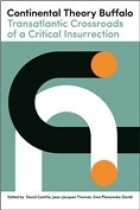
Continental Theory Buffalo is the inaugural volume of the Humanities to the Rescue book series, a public humanities project dedicated to discussing the role of the arts and humanities today. This book is a collaborative act of humanistic renewal that builds on the transcontinental legacy of May 1968 to offer insightful readings of the cultural (d)evolution of the last fifty years. The volume contributors revisit, reclaim and reassess the “revolutionary” legacy of May 1968 in light of the urgency of the present and the future. Their essays are effective illustrations of the potential of such interpretive traditions as philosophy, literature and cultural criticism to run interference with (and offer alternatives to) the instrumentalist logic and predatory structures that are reducing the world to a collection of quantifiable and tradeable resources. The book will be of interest to cultural historians and theorists, media studies scholars, political scientists, and students of French and Francophone literature and culture on both sides of the Atlantic.
Jameson, Maureen
University of Maine

Although the James Joyce papers may be the best known of the treasures housed in the UB Libraries Special Collections, Buffalo is also home to the William Carlos Williams collection, consisting of some 20,000 items. While working on these papers one day in 2019, Associate Curator Dr. Alison Fraser came across a fragment which she thought might interest her French professor, Maureen Jameson.
"A Demon Downed," written in or around 1940, captures a grim inner struggle over cigarettes -- the "demon" of the title -- informed by the writer's expertise as a physician tempered by the intuitions and humanistic values of the poet. What most fascinated Jameson, whose research concerns literature and tobacco, was that the stark confrontation with addiction in the "Demon" fragment is later completely absent from Williams' Autobiography, where not only is the poet's own smoking never mentioned, but even the account of a sudden illness at sea is rewritten to disguise the role of tobacco, emphatically blamed as the toxin in the earlier "Demon" version of the same incident.
Fraser was certain that the fragment would be of interest to Williams scholars, and successfully negotiated with the Williams estate to allow for its publication, with a brief introductory preface by Jameson. The fragment and preface have just appeared in the Paideuma: Modern and Contemporary Poetry and Poetics (46).
2020
Faculty Publications
Balsamo, Jean; Amy Graves, eds.
Classiques Garnier
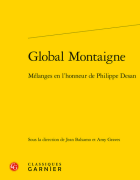
En hommage au professeur Philippe Desan, ce volume réunit quarante-neuf contributions, consacrées à Montaigne et à son œuvre, en français et en anglais. Dans une perspective transdisciplinaire, elles constituent l’approche la plus complète et la plus novatrice pour la connaissance d’un Montaigne global.
Negrete, Fernanda
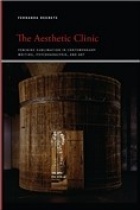
SUNY Press Excelsior Editions
In The Aesthetic Clinic, Fernanda Negrete brings together contemporary women writers and artists well known for their formal experimentation—Louise Bourgeois, Sophie Calle, Lygia Clark, Marguerite Duras, Roni Horn, and Clarice Lispector—to argue that the aesthetic experiences afforded by their work are underwritten by a tenacious and uniquely feminine ethics of desire. To elaborate this ethics, Negrete looks to notions of sublimation and feminine sexuality developed by Freud, Baudelaire, Mallarmé, and Nietzsche, and their reinvention with and after Jacques Lacan, including in the schizoanalysis of Gilles Deleuze and Félix Guattari. But she also highlights how psychoanalytic theory draws on writing and other creative practices to conceive of unconscious processes and the transformation sought through analysis. Thus, the “aesthetic clinic” of the book’s title (a term Negrete adopts from Deleuze) is not an applied psychoanalysis or schizoanalysis. Rather, The Aesthetic Clinic privileges the call and constraints issued by each woman’s individual work. Engaging an artwork here is less about retrieving a hidden meaning through interpretation than about receiving a precise transmission of sensation, a jouissance irreducible to meaning. Not only do art and literature serve an urgent clinical function in Negrete’s reading but sublimation itself requires an embrace of femininity.
Sessarego, Sandro; Colomina-Almiñana, Juan J.; and Adrián Rodríguez-Riccelli, eds.
John Benjamins Publishing Company
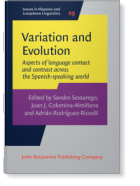
This book is a collection of original studies analyzing how different internal and external factors affect Spanish language variation and evolution across a number of (socio)linguistic scenarios. Its primary goal is to expand our understanding of how native and non-native varieties of Spanish co-exist with other languages and dialects under the influence of several linguistic and extra-linguistic forces. While some papers analyze the linguistic dynamics affecting Spanish grammars from a cross-dialectal perspective, others focus more closely on the relations established between Spanish and other languages with which it is in contact. In particular, some of these studies show how power and prestige may support (or not) the use of Spanish in different social contexts and educational realities, given that the attitudes toward this language vary greatly across the Spanish-speaking world. On the one hand, in some regions, Spanish represents the variety spoken by the majority of the population, typically related to prestige and power (Spain and Latin America). On the other hand, in other contexts, the same language is conceived as a minority variety, which may or may not be associated with stigmatized immigrant groups (i.e., in the US).
Ugolini, Paola
University of Toronto Press
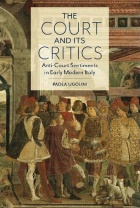
The Court and Its Critics focuses on the disillusionment with courtliness, the derision of those who live at court, and the open hostility toward the court, themes common to Renaissance culture. Anti-courtly discourse furnished a platform for discussing some of the most pressing questions of early modern Italian society. The court was the space that witnessed a new form of negotiation of identity and prestige, the definition of masculinity and of gender-specific roles, the birth of modern politics and of an ethics based on merit and on individual self-interest.
The Court and Its Critics analyses anti-courtly critiques using a wide variety of sources including manuals of courtliness, dialogues, satires, and plays, from the mid-fifteenth to the early seventeenth century. The book is structured around four key figures that embody different features of anticourtly sentiments. The figure of the courtier shows that sentiments against the court were present even among those who apparently benefitted from such a system of power. The court lady allows an investigation of the intertwining of anticourtliness and anti-feminism. The satirist and the shepherd of pastoral dramas are investigated as attempts to fashion two different forms of a new self for the court intellectual.
2019
Flaugh, Christian and Lena Taub Robles, eds.
Brill
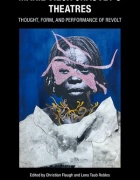
Marie Vieux Chauvet’s Theatres: Thought, Form, and Performance of Revolt at once reflects and acts upon the praxis of theatre that inspired Haitian writer Marie Vieux Chauvet, while at the same time provides incisively new cultural studies readings about revolt in her theatre and prose. Chauvet – like many free-minded women of the Caribbean and the African diaspora – was banned from the public sphere, leaving her work largely ignored for decades. Following on a renewed interest in Chauvet, this collection makes essential contributions to Africana Studies, Theatre Studies, Performance Studies, Postcolonial Studies, and Global South Feminisms.
Whitener, Brian S.
University of Pittsburgh Press

Drawing on a mix of political, economic, literary, and filmic texts, Crisis Cultures challenges current cultural histories of the neoliberal period by arguing that financialization, and not just neoliberalism, has been at the center of the dramatic transformations in Latin American societies in the last thirty years. Starting from political economic figures such as crisis, hyperinflation, credit, and circulation and exemplary cultural texts, Whitener traces the interactions between culture, finance, surplus populations, and racialized state violence after 1982 in Mexico and Brazil. Crisis Cultures makes sense of the emergence of new forms of exploitation and terrifying police and militarized violence by tracking the cultural and discursive forms, including real abstraction and the favela and immaterial cadavers and voided collectivities, that have emerged in the complicated aftermath of the long downturn and global turn to finance.
2016
Amador, Carlos
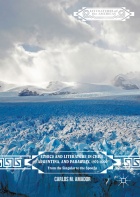
Palgrave Macmillan
This book argues for a new reading of the political and ethical through the literatures of Argentina, Chile, and Paraguay from 1970-2000. Carlos Amador reads a series of examples from the last dictatorship and the current post-dictatorship period in the Southern Cone, including works by Augusto Roa Bastos, Roberto Bolaño, Ceferino Reato, Horacio Verbitsky, Nelly Richard, Diamela Eltit, and Willy Thayer, with the goal of uncovering the logic behind their conceptions of belonging and rejection. Focusing on theoretical concepts that make possible the formation of any and all communities, this study works towards a vision of literature as essential to the structure of ethics.
Chiesa, Laura
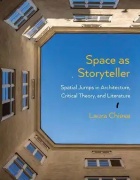
Northwestern University Press
Walter Benjamin's Arcades Project suggests that space can become a storyteller: if so, plenty of fleeting stories can be read in the space of modernity, where repetition and the unexpected cross-pollinate. In Space as Storyteller, Laura Chiesa explores several stories across a wide range of time that narrate spatial jumps, from Benjamin's tangential take on the cityscape, the experimentalism of Futurist theatricality, the multiple and potential atlases narrated by Italo Calvino and Georges Perec, and the posturban thought and practice of Bernard Tschumi and Rem Koolhaas/OMA. Space as Storyteller diverts attention from isolated disciplines and historical or geographical contexts toward transdisciplinary encounters that mobilize the potential to invent new spaces of comparison, a potential the author describes as "architecturability."
2014
Scarlett, Elizabeth
University of Michigan Press
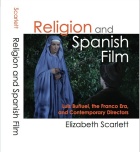
Treatments of religion found in Spanish cinema range from the pious to the anticlerical and atheistic, and every position in between. In a nation with a strong Catholic tradition, resistance to and rebellion against religious norms go back almost as far as the notion of “Sacred Spain.” Religion and Spanish Film provides a sustained study of the religious film genre in Spain practiced by mainstream Francoist film makers, the evolving iconoclasm, parody, and reinvention of the Catholic by internationally renowned Surrealist Luis Buñuel, and the ongoing battle of the secular versus the religious manifested in critically and popularly acclaimed directors Pedro Almodóvar, Julio Medem, Alejandro Amenábar, and many others. The conflicted Catholicism that emerges from examining religious themes in Spanish film history shows no sign of ending, as unresolved issues from the Civil War and Franco dictatorship, as well as the unsettled relationship between Church and State, continue into the present.
1994
Scarlett, Elizabeth
University Press of Virginia
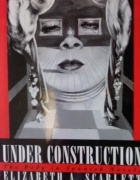
A Choice selection for "Outstanding Academic Books of 1995."
Our bodies constitute the most tangible link between who we are and what we experience in the world; for this reason a large corpus of literary and cultural studies has turned to the human body as a point of reference in the last few years. As Elizabeth Scarlett points out, "Modern Spanish literature is fertile terrain for the exploration of the body as textual marker.".
Using modern feminist and narratological tools of analysis, Scarlett offers illuminating insights into the terms of embodiment in novels by Emilia Pardo Bazan, Rosa Chacal, and Merce Rodoreda, Carmen Martin Gaite, Soledad Puertolas, Camilo Jose Cela, Luis Martin Santos, Julio Llamazares, and Antonio Munoz Molina.
Scarlett reveals significant correlations between gender and figurations of the female (and male) body and traces a history of the mind-body connection in Spanish novels from the late nineteenth century to the present.
In the time-honored hierarchy that pits mind against body and privileges the more intangible of the two, woman is typically associated with the flesh and man with transcendence. Perhaps this is why, Scarlett observes, the body-as-text begins to make its most dynamic appearances in novels written by female authors.
As one draws closer to the present, however, she notes that male as well as female writers problematize and protagonize the dichotomy of mind and body, constructing the body as situation or process rather than as object. Under Construction is the first sustained study of its kind. It provides original and compelling readings of Spanish novels, and it grounds theory in the changing specificities of literary movements, generational rivalries, and historical turmoil.